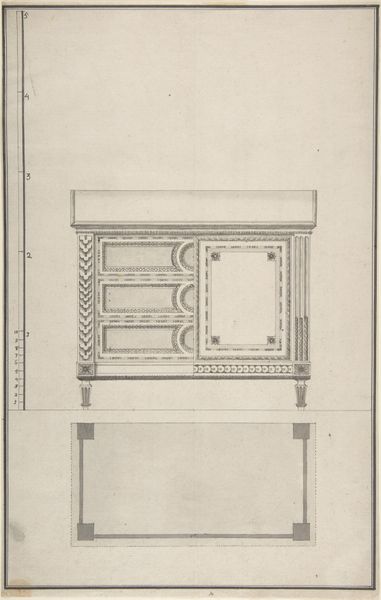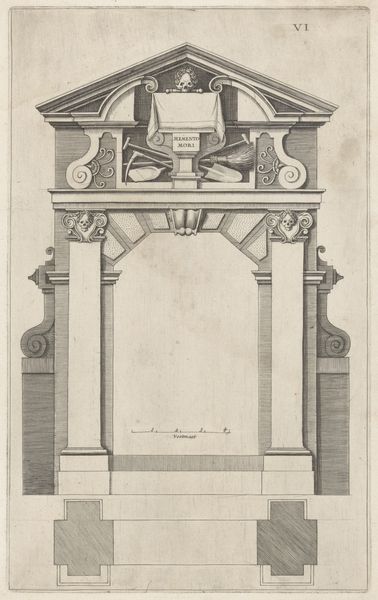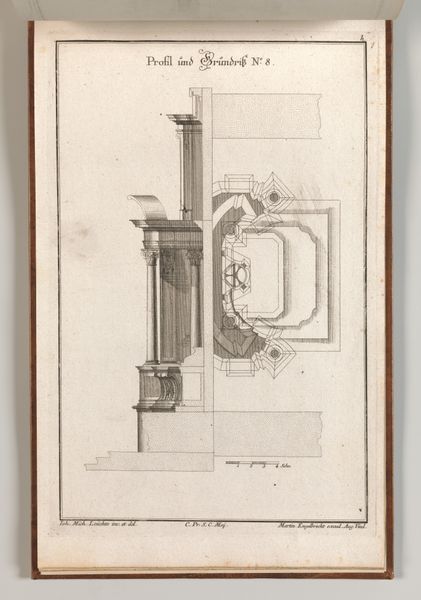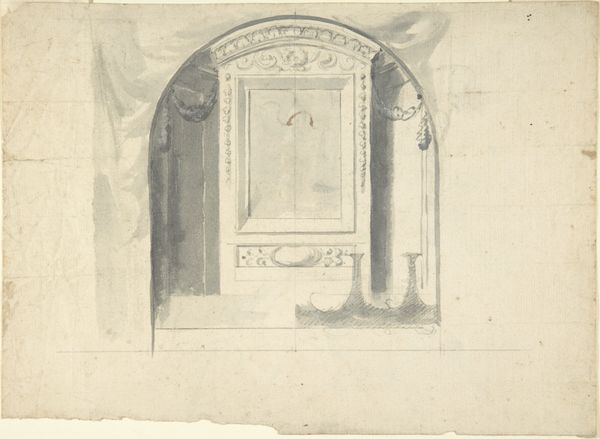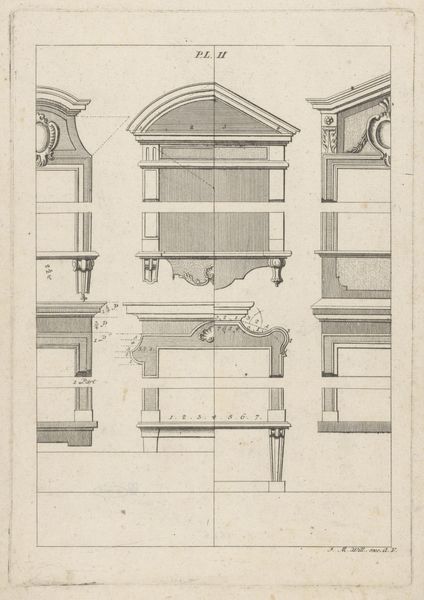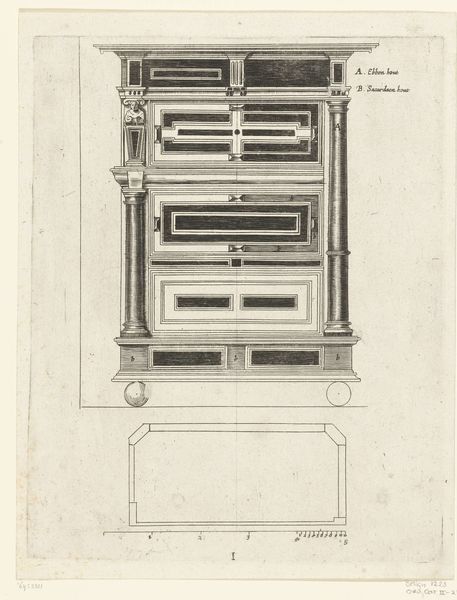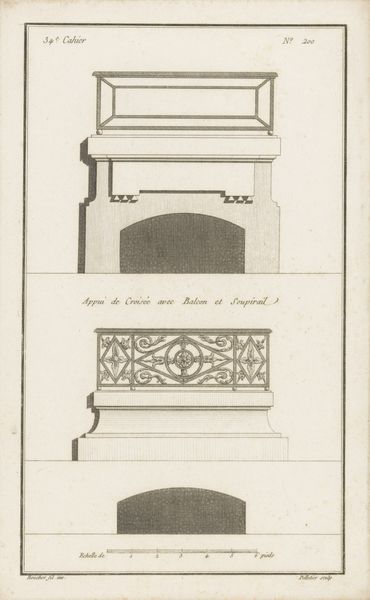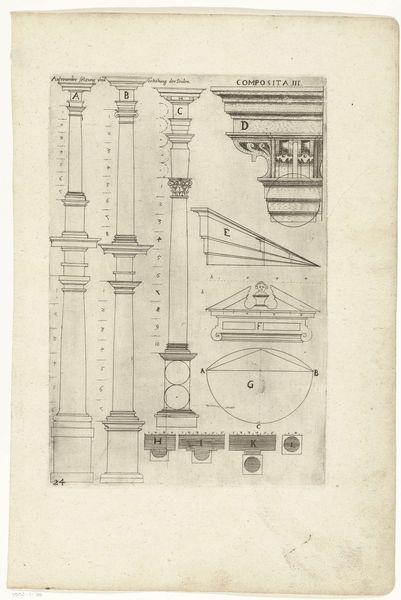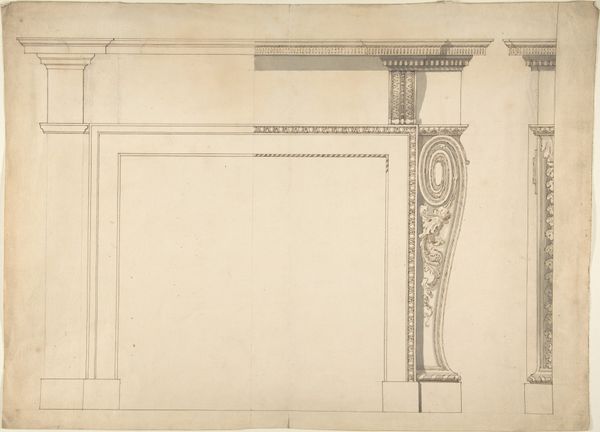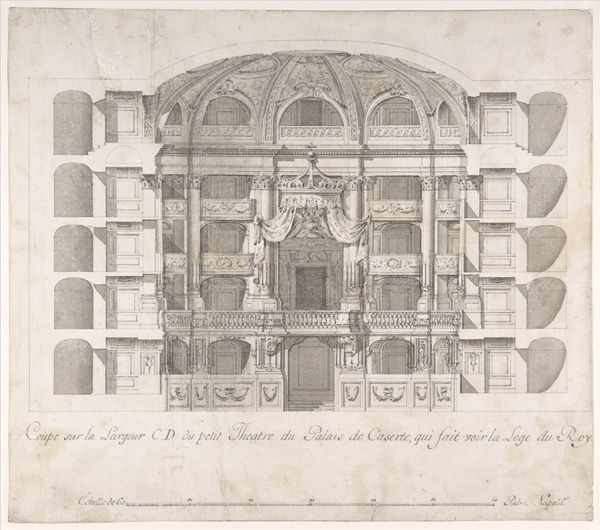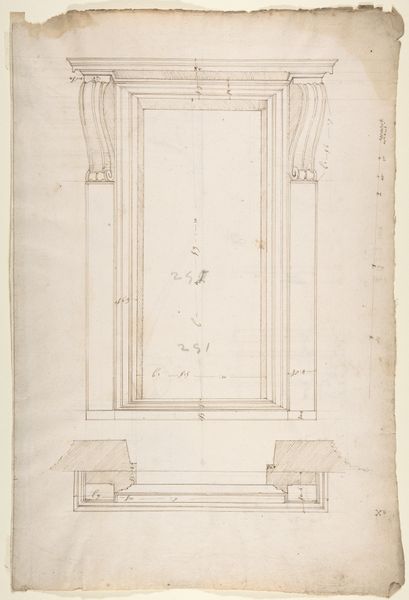
drawing, print, pencil, architecture
#
drawing
#
neoclacissism
# print
#
geometric
#
pencil
#
history-painting
#
architecture
Dimensions: sheet: 8 x 7 1/2 in. (20.3 x 19 cm)
Copyright: Public Domain
Curator: Here we have Benjamin Dean Wyatt’s "Design for a Cast-iron Hob Grate in Ormolu," created in 1814. The drawing combines pencil, print, and drawing, showcasing an elegant Neoclassical fireplace design. What strikes you most about this piece? Editor: The sheer restraint. It is neoclassical, yes, but pared down. Austere even. Given the context of the Regency period, where aesthetics served as important cultural propaganda, it seems very subdued. Curator: Let’s consider Wyatt’s role as an architect and designer. This drawing isn’t just a pretty picture. It’s a blueprint for production. Notice the detailed rendering, the careful calculations informing the geometric structure of the fireplace. The emphasis on materials – cast iron and ormolu – speaks volumes about wealth, industry, and the transformation of domestic space during the Industrial Revolution. Editor: Absolutely. The material is always the message. What's fascinating to me is imagining this design in context, warming the domestic space of the elite. How did such displays of refined taste function to legitimize the era's hierarchies of wealth and social status? A seemingly simple grate becomes a focal point of identity. Curator: Exactly. Look at how the design integrates classical motifs – the fluted columns, the stylized shells. Yet, these elements are rendered for mass production in industrial materials. It blurs the line between art and design. It's all carefully constructed to signify prestige but achieved through the means of expanding industrial capabilities. Editor: Also, there is a decided erasure of labor here. Who are the bodies extracting ore from the earth and assembling it in some factory? Whose hands transform these materials into the final, desirable object? That silence speaks volumes, doesn’t it? Curator: It's easy to overlook, isn't it? But that’s precisely the point. The design’s success relies on that erasure. But in its clean lines and precise detail, Wyatt’s design lays bare the bones of early 19th-century aspiration and achievement. Editor: It’s not simply about admiring an object, it’s interrogating the conditions of its existence and understanding its place within much larger and often unequal systems. Curator: A beautiful, sobering reminder. Editor: Indeed, one that sets us to wondering.
Comments
No comments
Be the first to comment and join the conversation on the ultimate creative platform.
